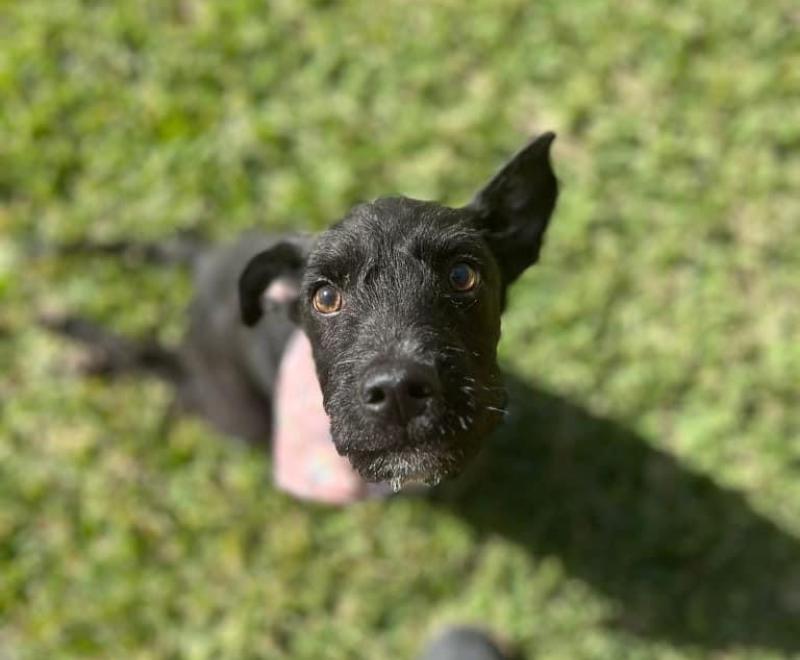Texas animal shelter’s total turnaround

Winnie, a little brown-and-white dog, was so terrified that she would bark at anyone who stopped in front of her kennel. Tadpole, a diminutive black pup, couldn’t move his hind legs after being rescued from under a house. And Sora, a tiny kitten only 8 days old, was brought in with wounds and needed round-the-clock care to survive.
Winnie, Tadpole, and Sora are just a few of the many dozens of animal stories Taylor Lefebvre, Best Friends embed project operations manager, can tell after spending 13 months at the Brownsville Animal Regulation and Care Center in Texas. Her time spent working with the staff there is part of Best Friends’ national shelter embed program, made possible in part by a grant from Maddie’s Fund®. The program is one of the ways that Best Friends is helping shelters around the country reach no-kill in 2025.
While the Brownsville shelter is experiencing the same challenges facing animal shelter across the country (limited staffing, a strained budget, and not enough resources), over the past year it has made great strides forward in lifesaving.
“Taylor brought a level of expertise — something that was desperately needed at the shelter,” says Dr. Antonio Caldwell, the shelter’s deputy director of animal services. “She brought such an overwhelming sense of passion and knowledge for her work, and she really coached and helped us to increase our lifesaving, elevate our level of animal care, and open the lines of communication with the community to both let them know our needs and find out what the community needs as well.”
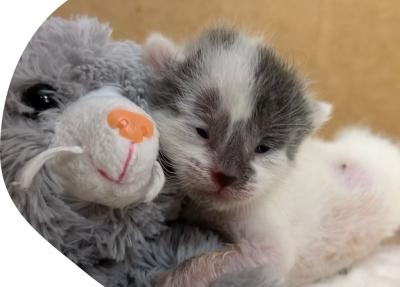
Making changes to save more dogs and cats
Of the many changes that saved pets’ lives during the embed project, one of the biggest successes, Taylor says, was in stopping disease from spreading at the shelter. “There is an ongoing challenge with outbreaks of distemper and parvovirus in south Texas. Getting the shelter in a position where they can vaccinate every animal as soon as they enter the shelter (even before they are in housing) is huge.”
Taylor says the Brownsville shelter now has the ingredients for a successful community cat program in place. More than 150 cats have already been successfully spayed or neutered and vaccinated before being returned to where they were originally found. Marketing materials explaining the benefits of the program have been distributed throughout the city, including to city officials. The shelter’s animal services officers received training on how to speak with residents about what a community cat program is and to offer humane deterrents if people don’t want cats on their property.
[Intern makes lasting impact for Brownsville pets]
In addition, foster and adoption have become priorities, and the staff is talking about both on social media as much as possible. “On the first day I was in Brownsville (May 2023), there were just two animals in foster care (both with employees),” Taylor says. “On my last day there, we had 87 animals in foster care, and we thank the Brownsville pet-loving community for answering the call.”
Adoptions increased dramatically through the embed program, fueled primarily by more publicity through social media and adoption events. Adoption applications, available in English and Spanish, can be completed online. Packets of information on local veterinarians, trainers, groomers, and microchips are readily available. The shelter’s adoptable animals are regularly featured at adoption events around the city.
Brownsville is collaborating with other animal welfare organizations in the state on rescue efforts and transferring animals to other locations when doing so gives them the best chance of being adopted.
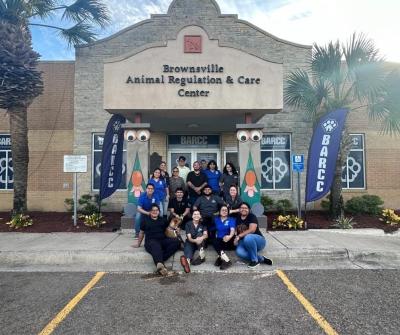
Shelter director eyes progress in 2024
One of the biggest challenges coming up over the summer is convincing city officials to increase the shelter’s budget, so it can continue its efforts to save more lives.
“Best Friends’ embed has definitely made a good impression on city leadership,” says Dr. Caldwell. “We’ll have to wait until September to see if we can get our requests approved, but it’s currently in the budget process, and I’m confident we will receive some additional financial support.”
Increased staffing, more communication and community education, better access to care (including spay/neuter), and providing services to the community are all on his list for 2024.
“We’re responding to what we saw was a need to start a community pet food pantry, so we’re working to identify ambassadors to help us with food distribution,” he says. “We’re also looking to upgrade our facility, such as fixing some HVAC and roof issues, for which the city will be providing funding. We will continue to develop our staff to give the best level of care to each and every animal.”
Although the formal embed ended in May, Best Friends’ relationship with the Brownsville shelter will continue, says Brent Tollner, Best Friends senior director of lifesaving programs. “We will still be here to help. We are just a phone call away to share in another success or if they hit a stumbling block. And, obviously, Taylor will always be available to them, too. We’re still invested in Brownsville’s continued success.”
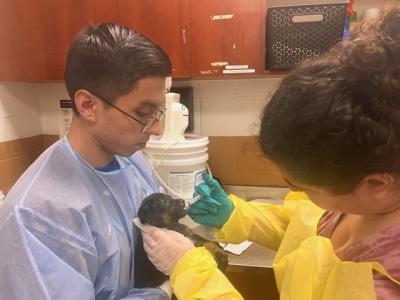
The future is bright
Progress in Brownsville is reflected in the shelter's save rate, which was as low as 26% in 2022 and rose dramatically to an average of 77% for the last 10 months of the embed. And the ultimate highlight (so far) was in March 2024 when the save rate for the month hit 90%, the threshold for no-kill.
But what might be the clearest indication of the progress in Brownsville took place in May when Taylor gave a presentation to the 12-person Brownsville Animal Shelter Advisory Committee that summarized the embed project, pointed to its accomplishments, and suggested recommendations for the future.
Her talk mentioned the names of animals whose lives were saved (and some who were not) to highlight the difference between when she first arrived in Brownsville and now.
[Amazing progress at Brownsville animal shelter]
There was Olive, a mama dog with puppies, whom she met at the shelter and had agreed to foster once she had moved to Texas. But when she arrived to start work, she learned that not only did Olive’s puppies not survive but Olive had mistakenly been put on the euthanasia list and killed.
Because of the many organizational and operational changes at the shelter through the embed program, Taylor told the committee, if Olive were at the shelter today, she and her puppies would be given their own quiet space. They would get fed proper amounts of food multiple times per day. And if there were a hold on an animal, proper checks and balances would be in place to ensure that a dog someone wanted would never be killed again.
“It was really powerful,” says Brent, who attended the meeting. “And it ended in a really good place, with Taylor highlighting all the progress the shelter made in the year she had been there. And, yes, everyone on the board was obviously moved by the presentation.”
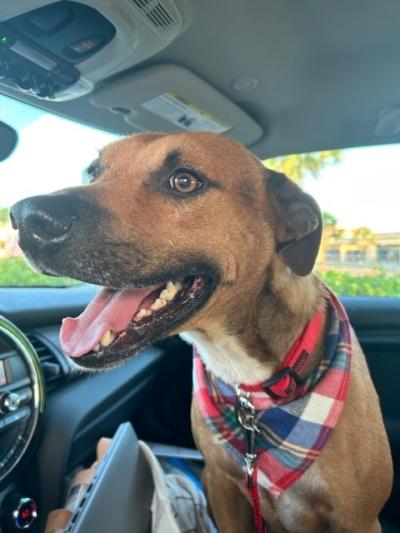
Happy endings
Fortunately, Winnie, Tadpole, and Sora are off living the good life these days.
Caregivers soon won over Winnie by providing her with treats. She stopped barking at everyone she saw. She blossomed into a cheerful girl who wiggles with happiness whenever she meets someone new and likes to zoom around the play yard. She was adopted by a local family into a home that includes seniors and small children.
Tadpole, the little guy who couldn’t move his hind legs, surprised Taylor and staffers when — despite his injuries — he was eager to lick their faces and hop around for treats. An online post about him garnered national attention, and a veterinary rescue group took him into their care. Tadpole was eventually adopted by the person who fostered him, who sends out videos of him zooming around in his custom-built wheelchair. And, she adds, he yells at her if she’s even a minute late for dinner.
And little Sora’s story attracted a young man who came to the shelter wanting to help. He had no experience with bottle-feeding kittens but was eager to learn. The staff provided him with the supplies and taught him what to do. Later, on the day that Sora turned 8 weeks old, he adopted her.
Taylor’s closing remarks to the committee said it best:
“One year ago, every single animal I just mentioned would not have left the shelter alive. Today, they are thriving, bringing joy to their new families. I know saving lives is never easy. But the transformation this shelter has gone through and the progress being made is nothing less than outstanding.
“When you continue to fight these hard battles and make the choices that affect the shelter, I hope you will remember Olive, Winnie, Tadpole, Sora. … These animals and this community deserve all of our hard work and our commitment.”
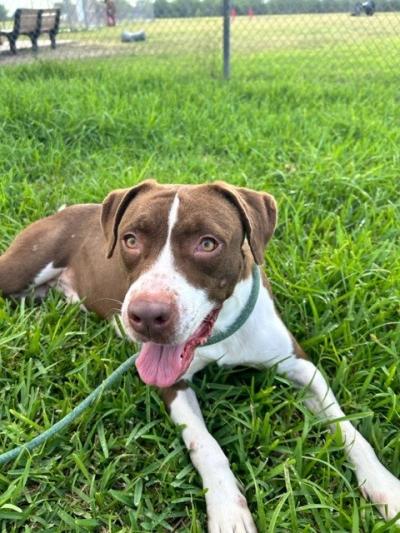
Let's make every shelter and every community no-kill in 2025
Our goal at Best Friends is to support all animal shelters in the U.S. in reaching no-kill in 2025. No-kill means saving every dog and cat in a shelter who can be saved, accounting for community safety and good quality of life for pets.
Shelter staff can’t do it alone. Saving animals in shelters is everyone’s responsibility, and it takes support and participation from the community. No-kill is possible when we work together thoughtfully, honestly, and collaboratively.
